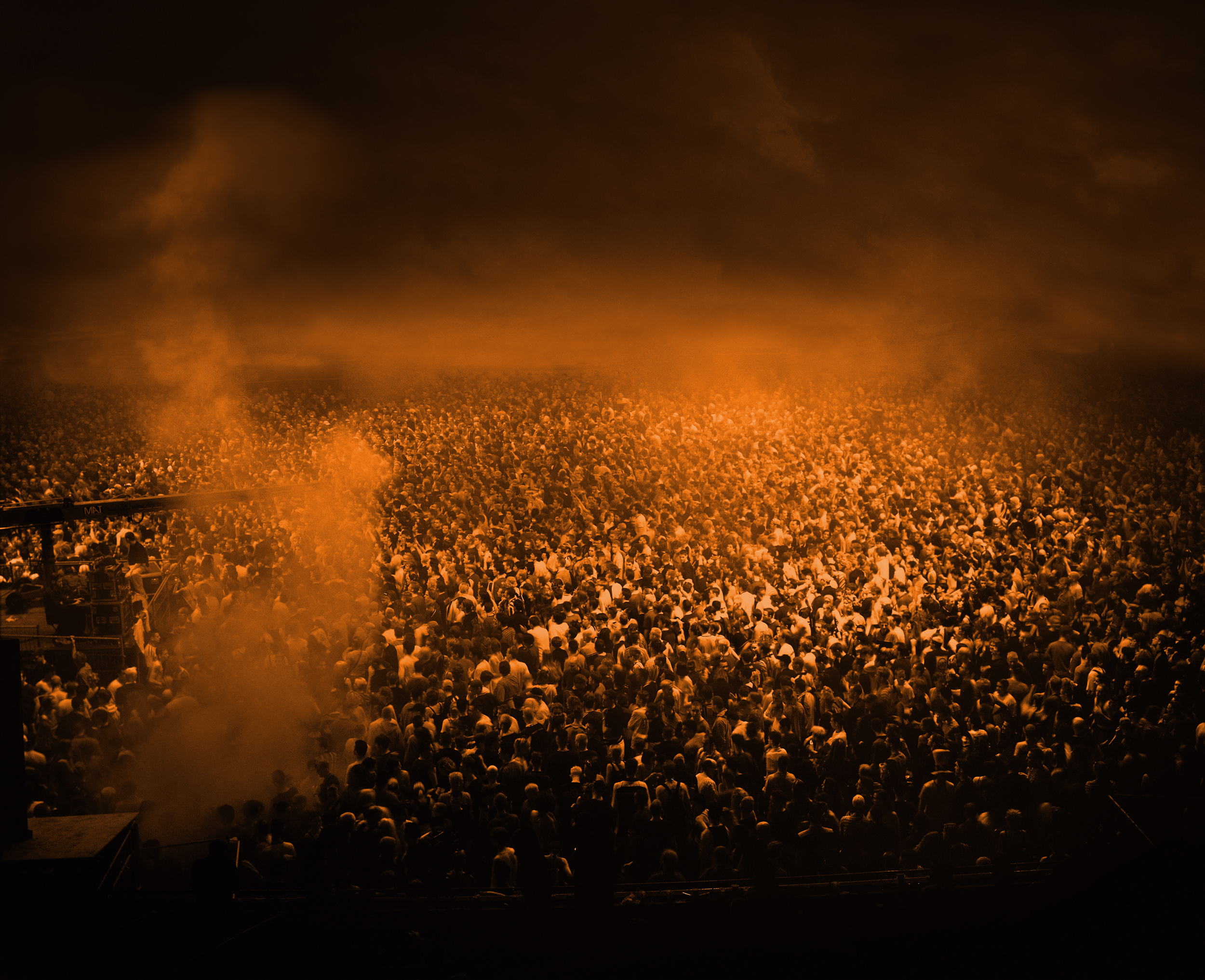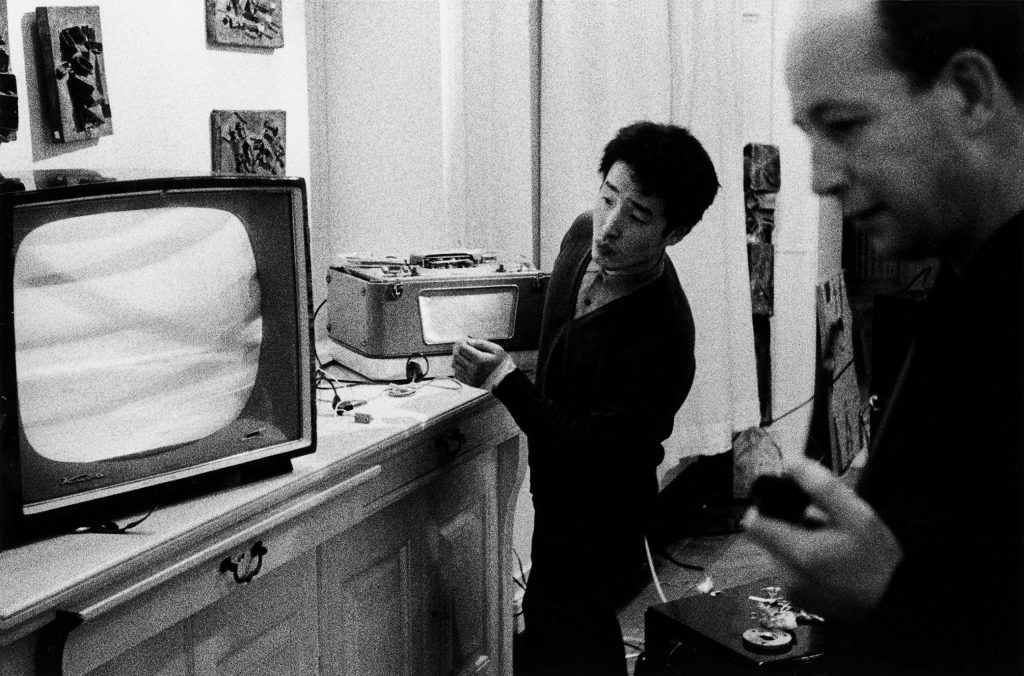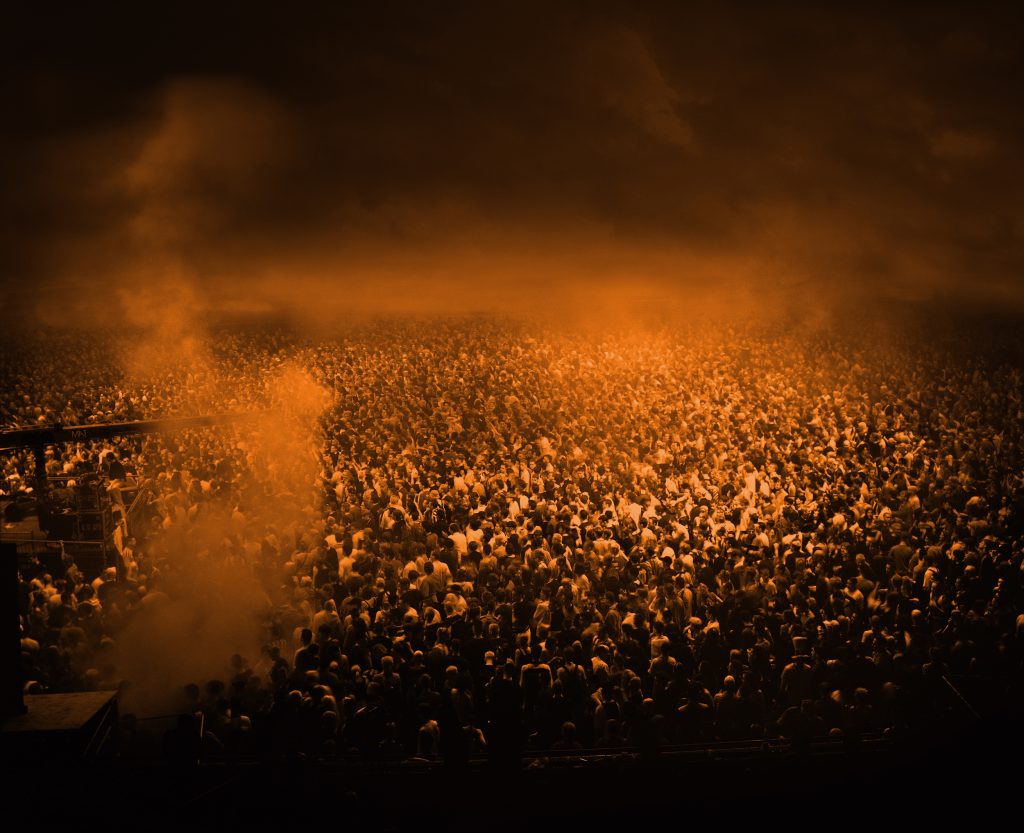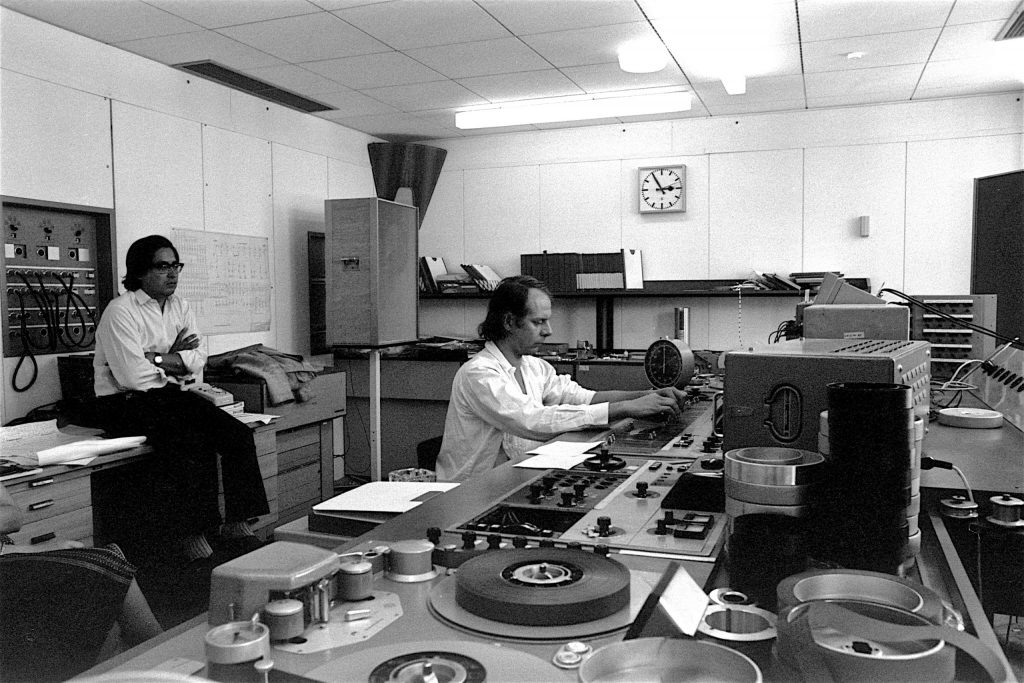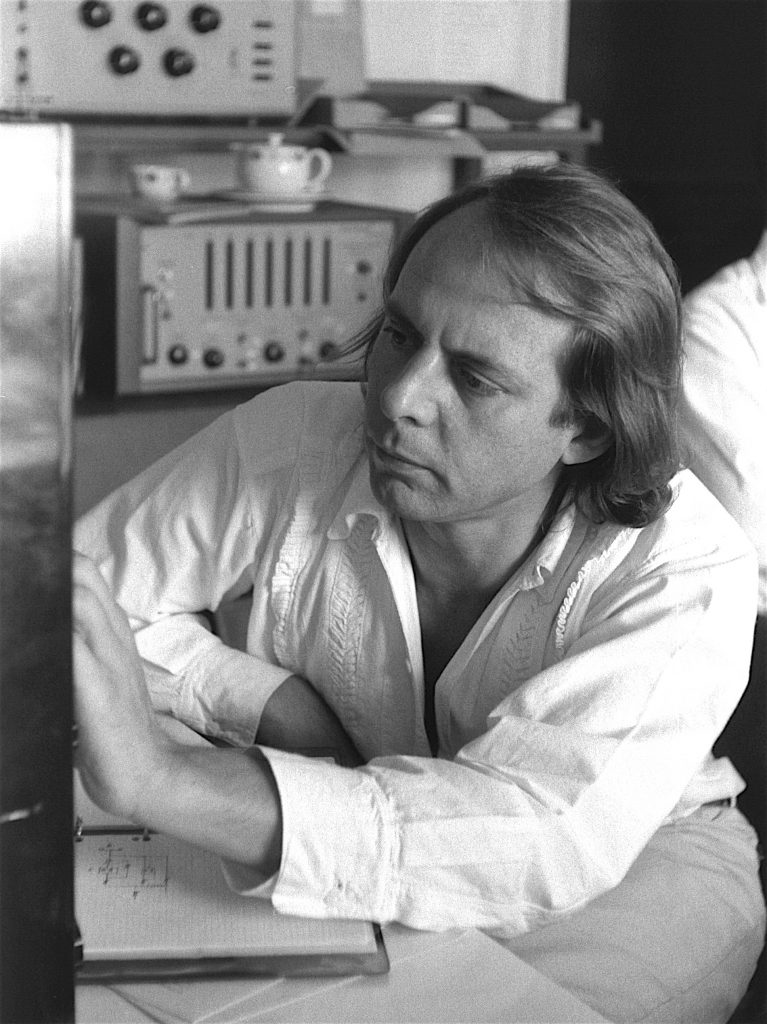An exhibition at the Museum Kunstpalast brings the techno era back to life. Co-curator Alain Bieber is leading us through the “Elektro. From Kraftwerk to Techno” show while explaining how – and why – the Düsseldorf museum presents an attitude to life.
A short dark hallway. A bright green smiley face is pulsating at the front of the room, as French techno DJ Laurent Garnier’s acid house is booming from the speakers. Bruno Peinado’s pill-turned-art that is waiting for me at the entrance of the “Elektro. From Kraftwerk to Techno” exhibition can be used even by teens, as it expands my knowledge rather than my perception. Welcome to the club!
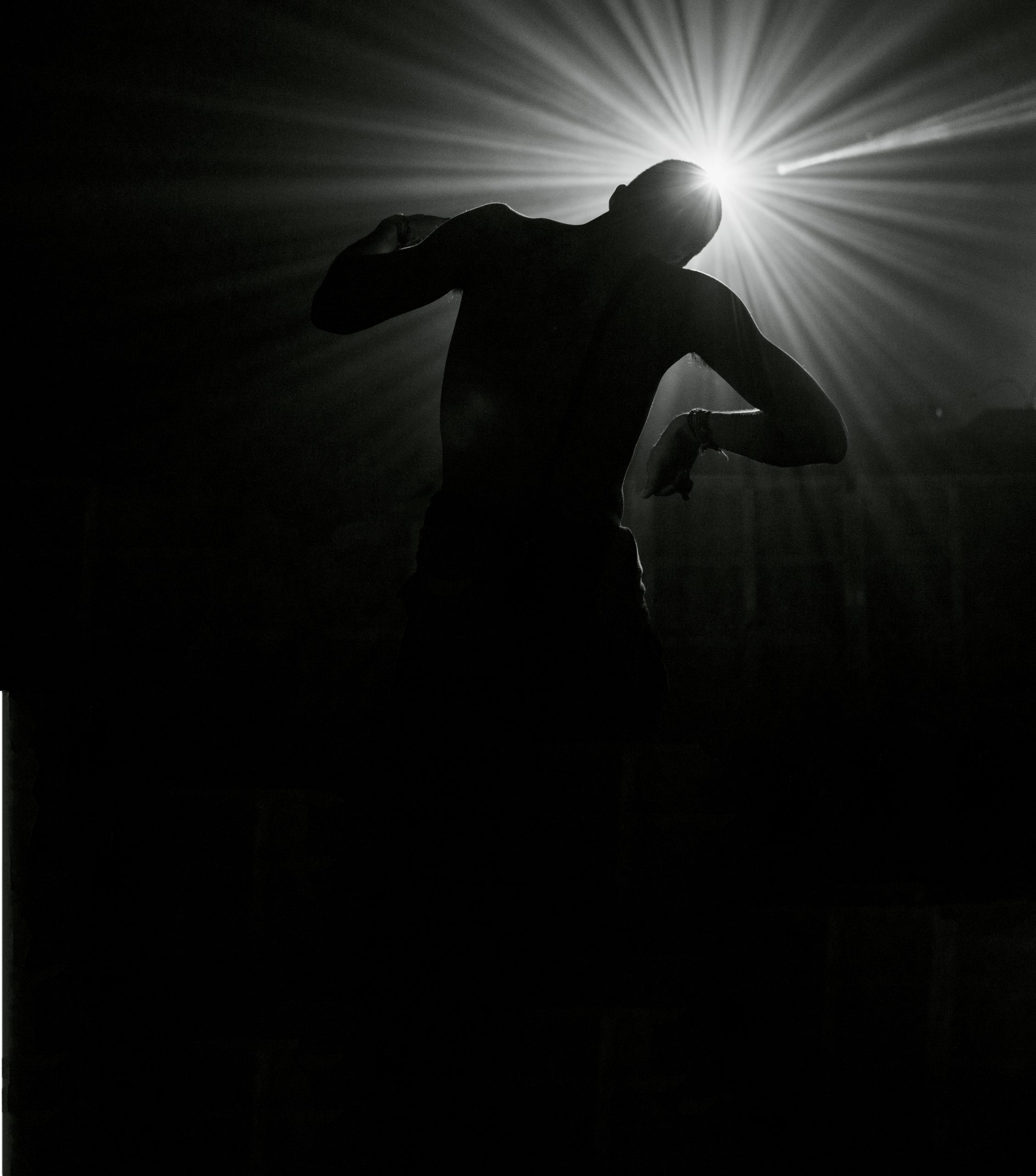
“The exhibition is definitely danceable,” Alain Bieber, artistic director of the NRW-Forum and co-curator of this show, tells me in greeting. It really only takes a few minutes in the semi-darkness of these high rooms before I feel spirited back to a club night of the 1990s.
The Düsseldorf Kunstpalast draws the techno age spirit into the museum, telling the century-long history of electronic music along the way. Everyone has come to join this memorable meeting in a venerable setting: Laurent Garnier, providing the playlist for the exhibition; Jeff Mills, who left his flightcase of records, marked by constant use, standing sculpture-like in the spotlight as a symbol of the breathless life of the DJ legend from Detroit; Karl-Heinz-Stockhausen, considered the father of electronic music, whose recording studio was raised from the dusty recesses of a Cologne depot. On the other side, there’s Jean-Michel Jarre’s laser harp, just a few steps from the devotional objects of his countrymen from Daft Punk. The duo may have recently split up, but the iconic helmets and gloves of Guy-Manuel de Homem-Christo and Thomas Bangalter are resting in comfortable harmony in their display case.
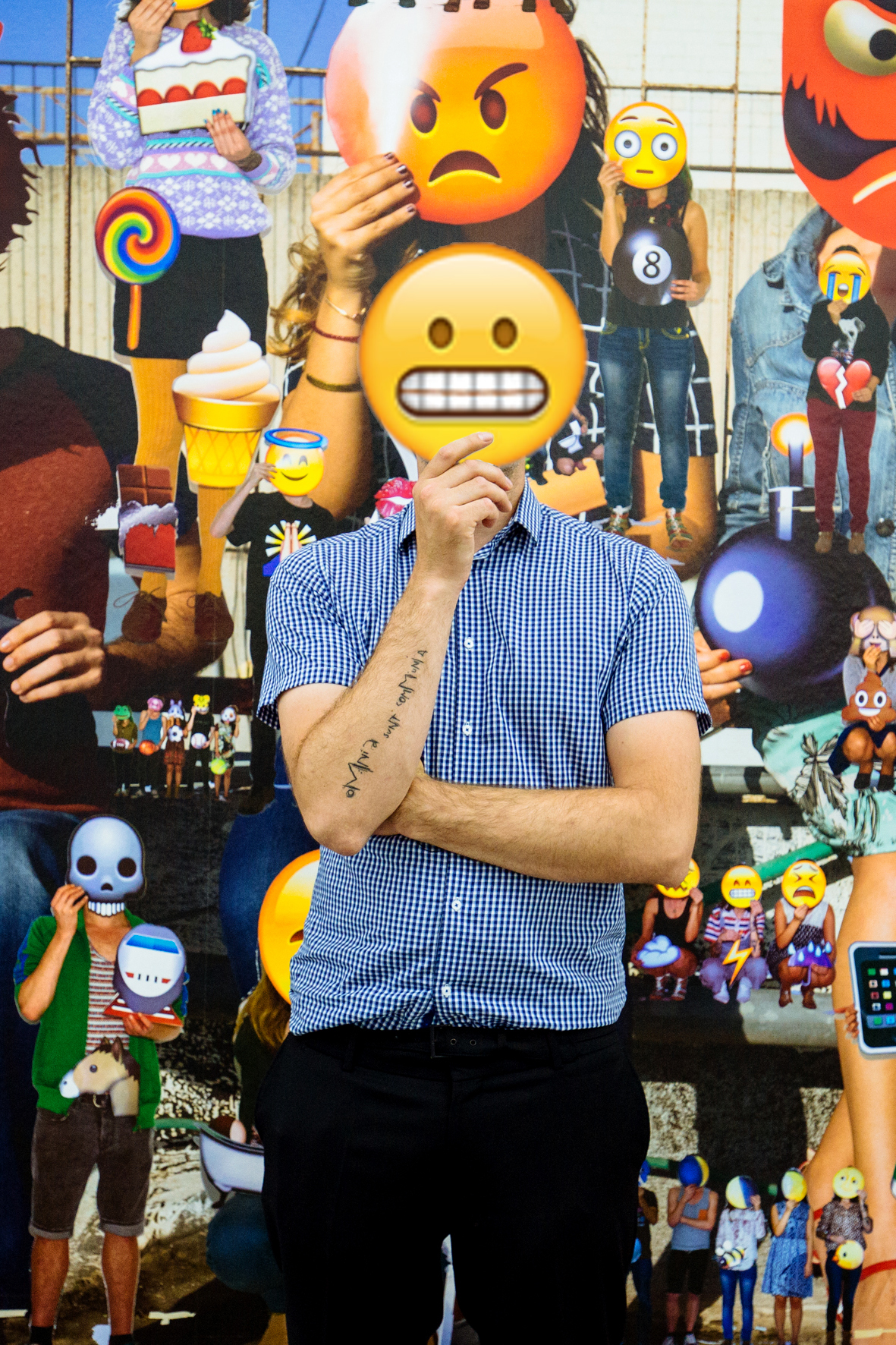
Alain Bieber
artistic director of the NRW-Forum
and co-curator of this show
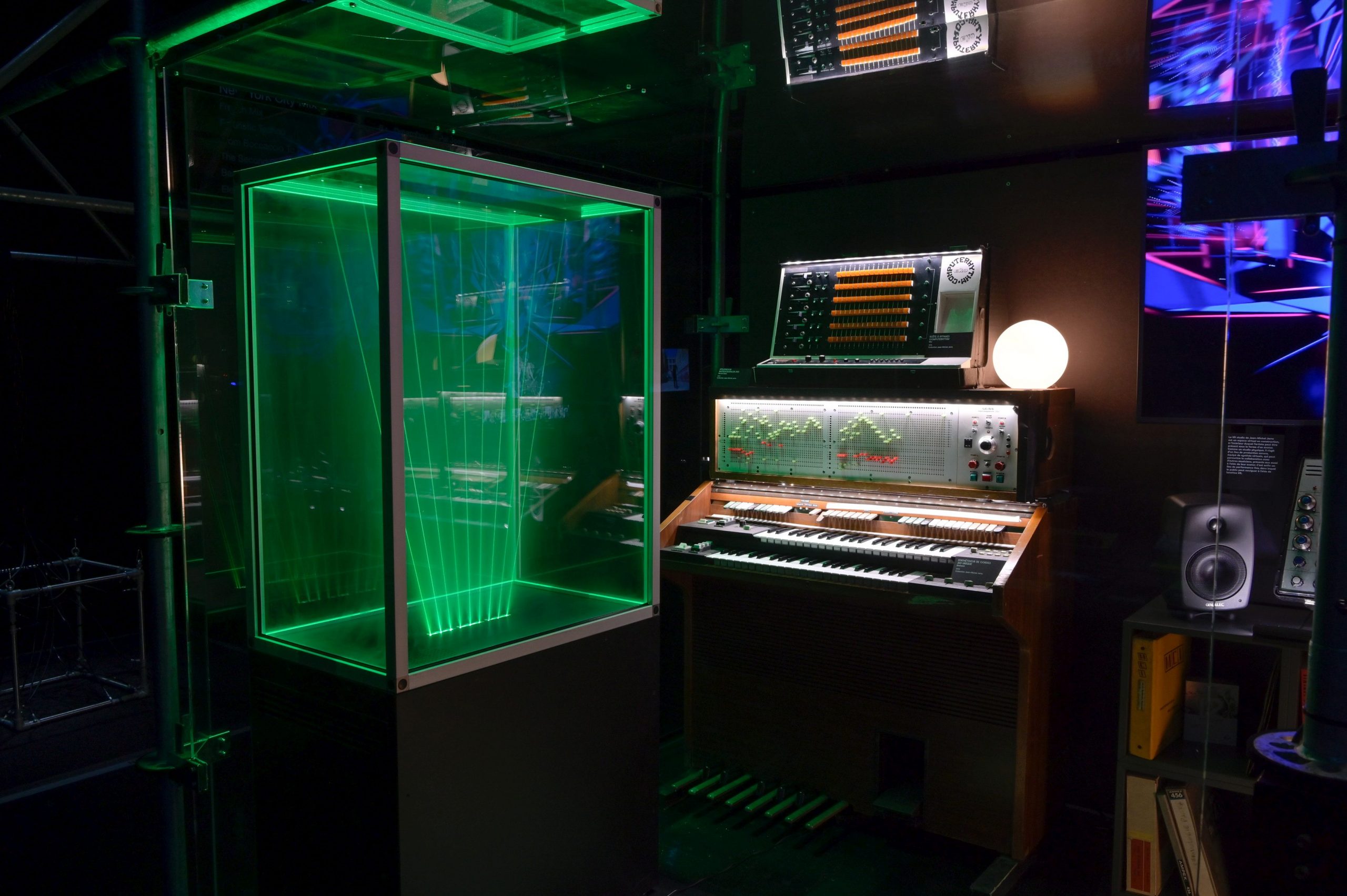
Berlin - the epicentre of the scene
Flat Eric, who earned his merits not only in the video for Mr Oizo’s 1999 hit “Flat Beat”, but also in Levis’s commercials, has a box seat in the metal frame opposite of this. A furry yellow Jim Henson doll enjoys the best view of the model of the famous Berlin techno club Berghain. The history of electronic music is certainly also a German history. “1990s Berlin, following the fall of the Wall, was an epicentre of the scene. The Tresor, the WMF, and the Bunker on Friedrichstraße were some of the best techno clubs the world ever saw.” Alain Bieber also hails from that decade. Although his musical passion at the time was for hip-hop, he did party in the above clubs, too.
The Loveparade and the Mayday are two other superlatives and milestones of international rave culture conceived in Berlin. Andreas Gursky’s epic photographs, brought together in a single room, tell of such enormous events. Gursky is considered a close friend of DJs Westbam and Sven Väth. “Andreas Gursky has been closely associated with the techno scene for many decades. The physicality and the lifestyle of the era fascinate him and have inspired him to take photographs of the Mayday Raves”, Alain Bieber explains the mixture of music and art. He does not see any sharp dividing line between the two disciplines. As he puts it: “Audiovisual and visual art are closely interlocked.”
There is another exhibit supporting that thesis: the photograph of a transformer, taken by Bernd and Hilla Becher, decorates the inlay of a Kraftwerk album. And the fact that the art of Kraftwerk itself is not missing from the show is already evident from its title. Founded by Ralf Hütter and Florian Schneider, who has since passed away, back in 1970, the Düsseldorf multi-media project Kraftwerk is regarded as a pioneer of techno around the world. The four robots of the electro-pioneers, with aesthetics that appear as visionary today as they did at the time, watch the hall from a single-storey scaffolding. “The robots have only been on public display in a German museum once before,” the co-curator notes with some pride. “If you look closely, you can see that they move.” They really do. A longer look at the four human-sized figures reveals that one of the human machines turns its head to face me.
“It wasn’t easy to bring the culture of the techno era’s music and life to the museum,” Bieber admits. The exhibition’s main curator, Jean-Yves Leloup, a Parisian sound artist, DJ, and journalist himself deeply rooted in the scene, had started gathering a large part of the 500 exhibits in 2017 already. Supported by Kraftwerk mastermind Ralf Hütter, Bieber then joined the team for the Düsseldorf show. “The large number of works certainly presented a challenge: We are presenting exhibits from more than 100 artists and musicians.”
”The room on Kraftwerk, presenting the eight concept albums in sound and pictures, forms our exhibition’s centrepiece.
Alain Bieber
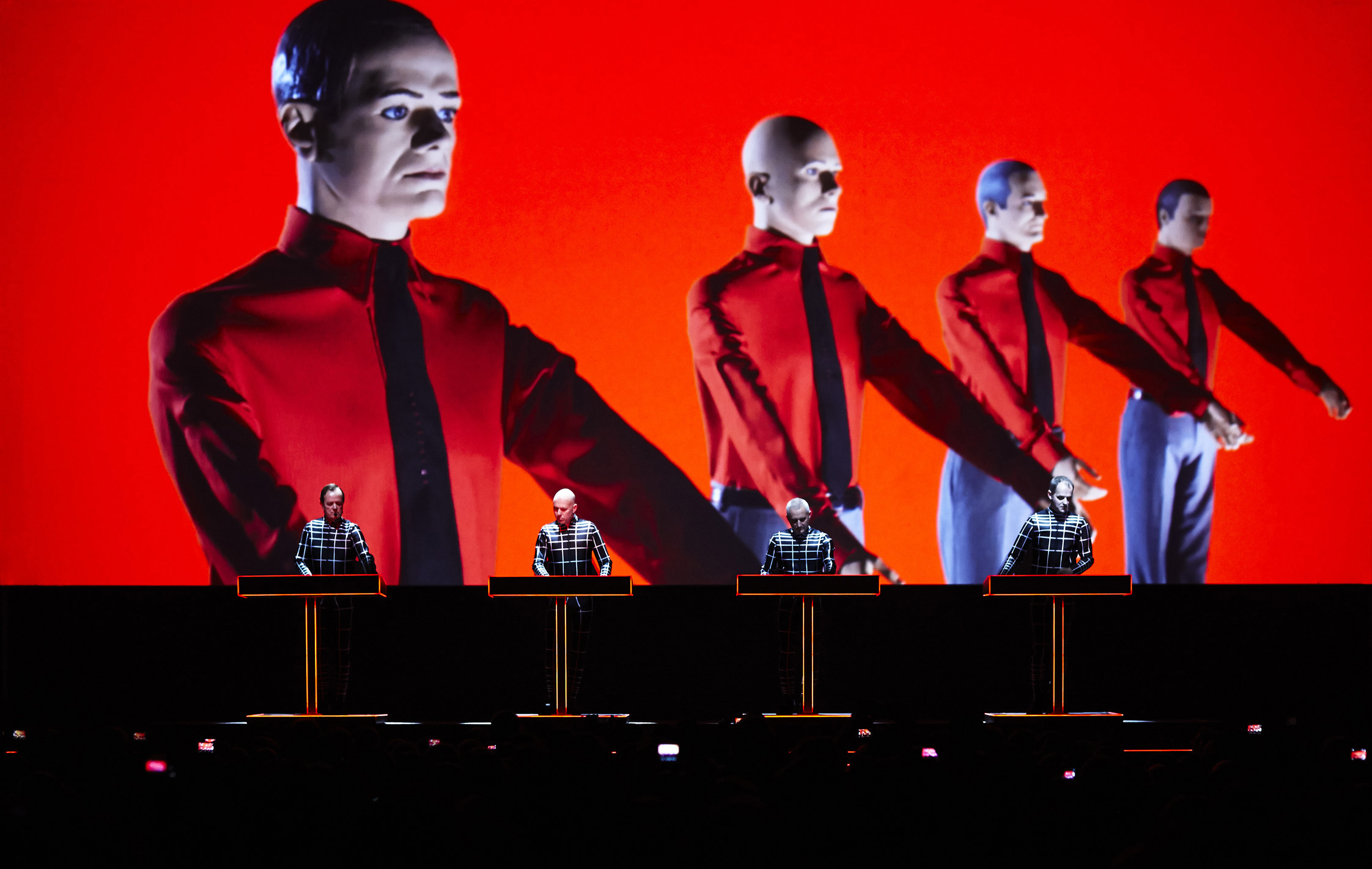
The show, previously presented at the Philharmonie de Paris and subsequently at the London Design Museum, was spiced up with a generous helping of local style for Düsseldorf. “Our close collaboration with Ralf Hütter was exciting and a great benefit,” Bieber says about his meeting with the Kraftwerk co-founder, who is revered around the globe. “The room on Kraftwerk, presenting the eight concept albums in sound and pictures, forms our exhibition’s centrepiece.”
If I had it my way, I’d allow myself to be whisked away by “Autobahn”, “Trans Europa Express”, “Computer World”, and “Tour de France” immediately, turning the day at the museum into a long club and video night. Alain Bieber has to move on, however. The exhibition is going to open tomorrow, and there are still some final touches to apply. As I leave the Kunstpalast, I’m still a bit intoxicated by the powerful 120 BPM. The light of the setting sun greets me outside. What? Really?! When has it gotten this late?
From 9 December 2021 to 15 May 2022
The exhibition at the Kunstpalast is scheduled to run from 9 December 2021 to 15 May 2022. It will cast light on the techno genre’s origins and showcase the connections between electronic music, contemporary design, and art.
📍 KUNSTPALAST, Ehrenhof 4-5, 40479 Düsseldorf
Text: Ilona Marx
Photos (in order of appearance):
1. Gurskya May Day III
2. Alain Bieber (von B. Babic)
3. Khrist NAME2018 Danseur
4. Jean Michel Jarre’s Virtuelles
5. Leve Manfred, NJ Paik und K.O.
6. WDR Studio Köln, Studio für Elektro
7. Stockhausen, WDR 1969-10-29
8. KRAFTWERK ROBOTER BOETTCH


